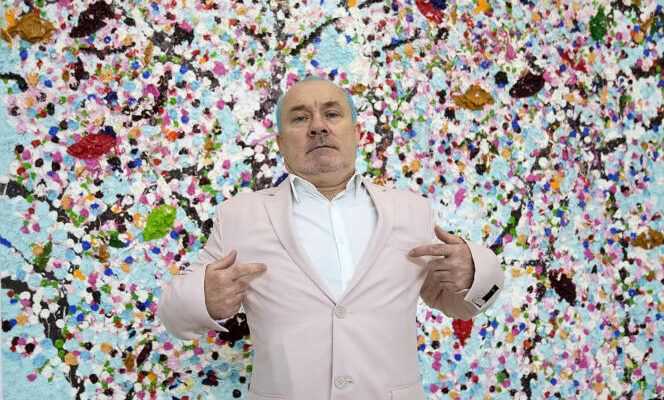Damien Hirst, known for his colored polka dots lined up on huge canvases and his animals cut out of formalin, the solitary artist cheek with his paintings of Cherry blossoms, exhibited at the Fondation Cartier until January 2, 2022. Bucolic works – in XXL format however – that the eternal young british artist, now 56 years old, swears to have painted himself, since the first confinement, with his heart and his brush. Or without the contribution of the noria of small anonymous hands who usually shape its bestsellers.
Hirst will be able to continue to discover the virtues and torments of solo painting: in October 2020, the star of the art market discreetly laid off 63 employees out of 175. The British site The Art Newspaper, which reveals the underside of this return to the workshop, specifies that the director of Science, the small offshore company of Damien Hirst, had nevertheless benefited from all the arsenal put in place by the British State to support companies in difficulty , since the start of the pandemic.
A fortune estimated at 370 million euros
His team had thus been put, initially, on partial unemployment and, cherry on the cake, the businessman had obtained a loan of 17.6 million euros, guaranteed over three years. The Art Newspaper specifies that he would have suspended the production of new works, except those of the most popular, such as his pill cabinets (Medicine Cabinets). However, the British artist is far from being on the streets. His stock of works is valued at 50.2 million euros, while his personal collection, made up of pieces from other artists that he buys and resells, was estimated, in January 2020, at 215 million euros. the Sunday Times had estimated, in May 2020, the fortune of the British artist at 370 million euros.
Like Damien Hirst, the American Jeff Koons and the Japanese Takashi Murakami took advantage, until the pandemic, of a period when nothing was too good, too big, too expensive. For twenty years, billionaire collectors like François Pinault and Bernard Arnault have praised them and pushed them to produce in an almost industrial way. In the spacious workshops of these three artists, an armada of assistants was tasked with fine-tuning, polishing and bricking finished products as impeccable as they are expensive, as well as derivative products, infinitely duplicable.
The spirit of these factories is far from that of a family and solidarity SME. Already in 2008, during the financial crisis, Damien Hirst fired the small staff. Ten years later, he rebels: he leaves 50 employees behind, just after having produced the pharaonic and lucrative blockbuster “Treasures from the Wreck of the Unbelievable”, exhibited in 2017 at the Palazzo Grassi and at the Punta della Dogana Museum, in Venice, in Italy.
You have 45.22% of this article left to read. The rest is for subscribers only.
